The challenge
Amey was appointed by National Highways to carry out a feasibility study of the existing Low Hurst Depot site layout to upgrade it to its future requirements. These included;
- Replacement and relocation of an existing salt barn which was beyond repair.
- Creating safe ways for pedestrians to move across a busy work site.
- Increased parking to meeting staff needs.
- Replacement of the existing Traffic Officers accommodation currently in a portacabin building.
- New Office building for both Amey and National Highways staff to accommodate planned for increased staff numbers.
- Modification to the existing maintenance garage to allow for additional workshop bay.
The site is a strategic location for National Highways to maintain the motorway and is located off the north bound carriages of the M6.
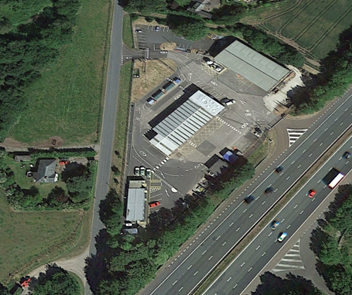
Fig.1 – Existing Low Hurst Depot
The Amey scope included;
- Developing the briefing in consultation with National Highways staff, Amey operations staff and the Traffic Officers team.
- Carry out our feasibility study including options appraisal.
- Carrying out our pre-consultation with the local planning authority.
- Co-ordinating and summitting a full Planning Application.
- Support National Highways during the Planning Application to determination including rebutting objections.
- Developing survey scopes to enable National Highways to procure these surveys prior to the commencement of detailed design.
The architectural team led on all stakeholder engagement as well as lead the multidisciplinary team management which include the following disciplines.
- M & E engineers
- Structural Engineer
- Highways engineers
- Drainage engineers
- Geotechnical engineers.
- Ecology and Environmental team.
- Planning Consultants
A key aim for National Highways was to ensure enabling investigations could be carried out at each stage in preparation for the next.
Our approach
Property Design Architects and Project Managers led the co-ordination of the depot feasibility study and the preparation of the Planning Application submission which were carried out in parallel to ensure any planning requirement indicated by the local authority were incorporated into the design prior to the application.
Through the Amey consulting framework, specialist Planning Consultants were appointed to advise on the Planning Policy and prepare a pre-application enquiry and specialist documents such as the Planning Statement.
This dialogue help identify that the local authority was concerned about the impact of the site development on an adjacent residential property and the design was developed to mitigate these concerns. It also became clear during the pre-application consultation with the local authority that permitted development rights would not be acceptable to implement the scope of the scheme and a Planning Application would be required. It was decided with National Highways that whilst an Outline Planning application could be made, a Full Planning Application would offer a shorter approval period overall.
The Property design Architects played a key role in developing the accommodation and operational brief with the stakeholders who were not clear at the outset of their requirement. Through the feasibility study multiple options were developed for the stakeholder to envisage how the site could operate. As part of this exercise efficiencies were found in the accommodation requirement where common facilities could be shared recusing in capital coasts as were as maintenance costs.
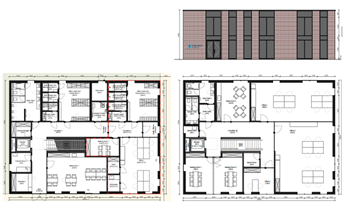
Fig. 2 Outline Plans and Elevations of Office Building
Working closely with the multidiscipline team the building and the site was development from an early stage to co-ordinate the requirements of each discipline to avoid significant re-work of the concept at detailed design. The masterplan of the depot was developed by the Architects and the Highways engineers working closely to understand the size of vehicles using the site and their vehicle auto tracking to ensure movement were feasible in this constrained site and risks were mitigated.
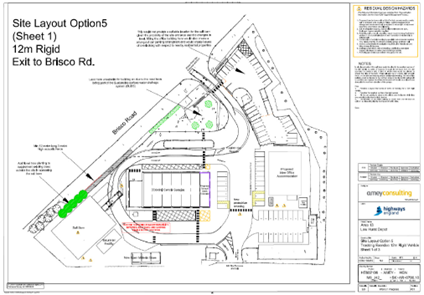
Fig. 3 Masterplan with Auto tracking.
During Planning Application period the Property design Architects and supporting Planning Consultants offered significant support with objection raised by the local highway department, drainage board and local resident which were all overcome with detailed technical responses.
In March 2021 the Planning Application was granted permission with very limited conditions.
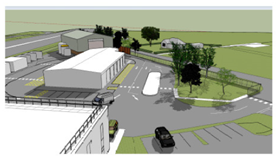
Fig. 4 Masterplan 3D model views
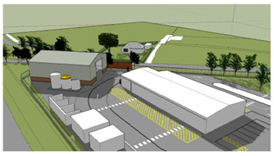
Benefits
There were several benefits to come out of this Planning Application and Feasibility design:
- Planning Application was granted and very minimal conditions which were not anurous.
- The effort spent at this design stage de-risked the programme and delays for the next design stage.
- The stakeholders were engaged to help them understand what they needed for their current and future requirements.
- At the outset of the project key disciplines contributing to the development of the design to c-offer a co-ordinated solution.
- 3D model of the project was used effectively to address objection during the planning application
